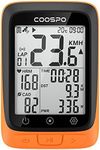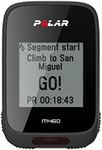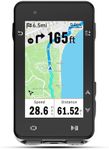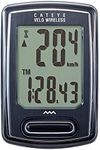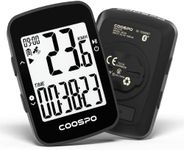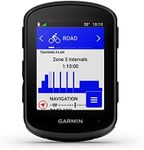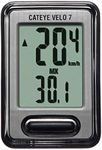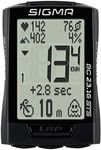Buying Guide for the Best Bike Speedometers
Choosing the right bike speedometer can make your rides more enjoyable and help you track your progress. The best speedometer for you depends on how you ride, what information you want to see, and how much you value features like connectivity or ease of use. Start by thinking about whether you want basic speed and distance tracking, or if you’re interested in more advanced data like heart rate, GPS mapping, or wireless syncing. Consider where and how you ride—commuters, casual riders, and serious cyclists all have different needs. Understanding the key features will help you pick a speedometer that fits your style and goals.Display TypeThe display type refers to how information is shown on the speedometer, such as analog, digital, or backlit screens. This is important because a clear, easy-to-read display ensures you can quickly glance at your stats while riding. Basic models often have simple, monochrome digital displays, which are easy to read in most conditions. More advanced models may offer larger screens, color displays, or backlighting for night rides. If you ride in varying light conditions or want to see multiple stats at once, look for a display that is bright, clear, and customizable to your preferences.
Wired vs. WirelessThis spec describes how the speedometer connects to its sensors—either with physical wires or wirelessly. Wired speedometers are generally simpler and can be more reliable since there’s no risk of signal interference, but they require running a cable along your bike, which can be less tidy. Wireless models are easier to install and look cleaner, but they may need batteries in both the head unit and sensor, and can sometimes lose connection. If you value a neat setup and easy installation, wireless is a good choice. If you prefer simplicity and don’t mind a cable, wired can be more straightforward.
Data Tracking FeaturesData tracking features refer to the types of information the speedometer can record, such as current speed, average speed, trip distance, total distance, ride time, and sometimes cadence or heart rate. Basic models track just speed and distance, which is enough for casual riders. More advanced units can track additional metrics like cadence (pedal revolutions per minute), heart rate, elevation, and even GPS routes. Think about what information motivates you or helps you improve—if you’re training or want to analyze your rides, look for a model with more comprehensive tracking.
GPS CapabilityGPS capability means the speedometer can use satellite signals to track your location, speed, and route. This is important for riders who want accurate distance measurements, mapping, or the ability to review their rides later. Some speedometers use GPS for all tracking, while others use wheel sensors and only add GPS for mapping. If you ride in new areas, like to explore, or want to upload your rides to apps, GPS is a valuable feature. For simple, local rides, you may not need GPS.
Battery Life and Power SourceBattery life and power source refer to how long the speedometer runs before needing a recharge or new batteries, and what type of batteries it uses. This is important because you don’t want your speedometer to die mid-ride. Basic models often use coin cell batteries that last for months, while advanced models with GPS or color screens may need frequent recharging. If you ride long distances or don’t want to worry about charging, look for a model with long battery life. If you’re okay with regular charging for more features, a rechargeable model may suit you.
Mounting and CompatibilityMounting and compatibility describe how the speedometer attaches to your bike and whether it fits your handlebars or stem. Some models have universal mounts, while others may need specific adapters. It’s important to ensure the speedometer will fit your bike and be easy to see while riding. If you have a unique handlebar setup or want to switch the speedometer between bikes, look for flexible mounting options.
Connectivity and App IntegrationConnectivity and app integration refer to the speedometer’s ability to connect with smartphones, fitness apps, or other devices via Bluetooth or ANT+. This is important if you want to sync your ride data, receive notifications, or use additional sensors like heart rate monitors. If you enjoy tracking your progress over time or sharing rides online, choose a model with good connectivity. If you prefer to keep things simple, you may not need these features.

